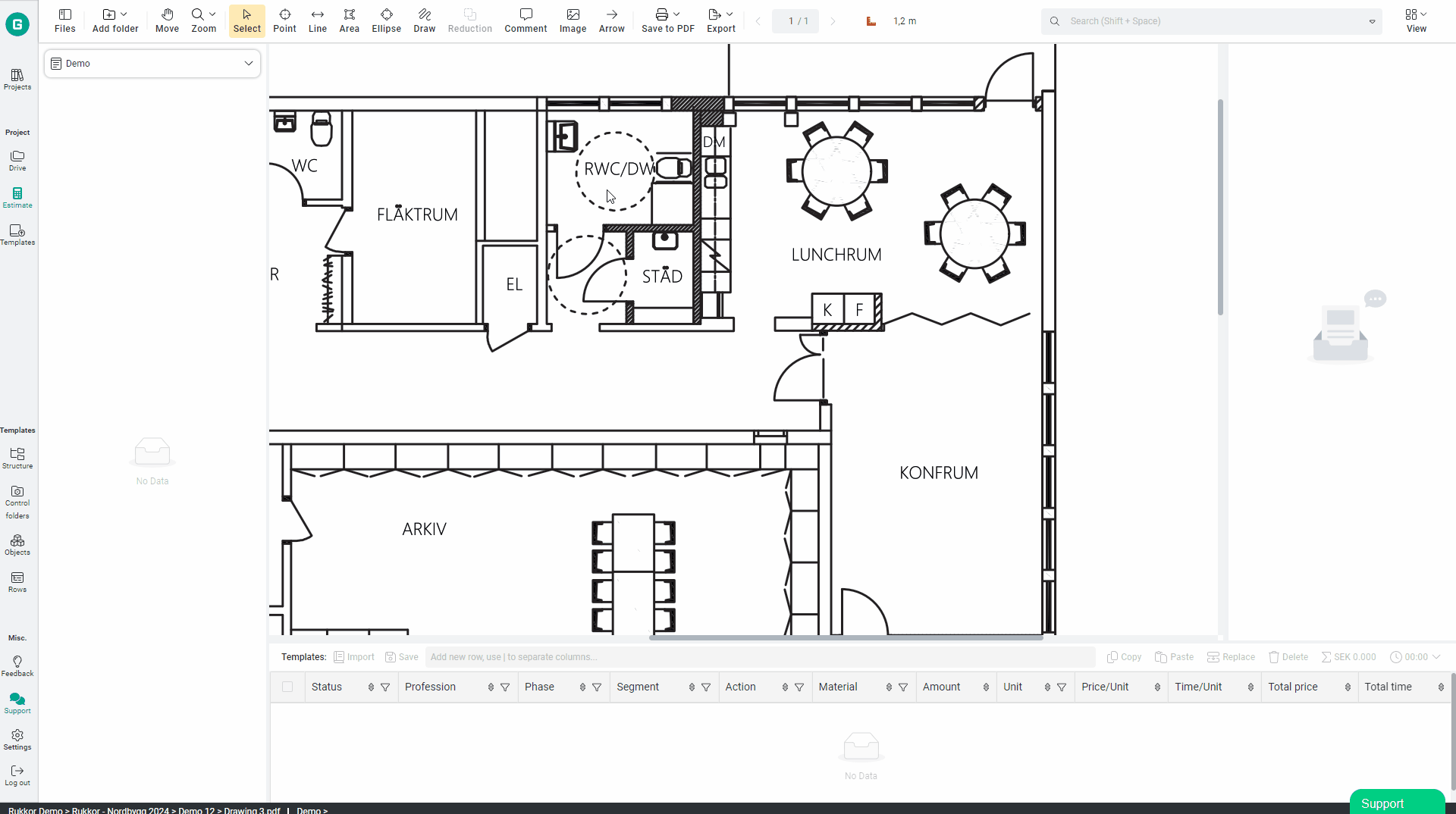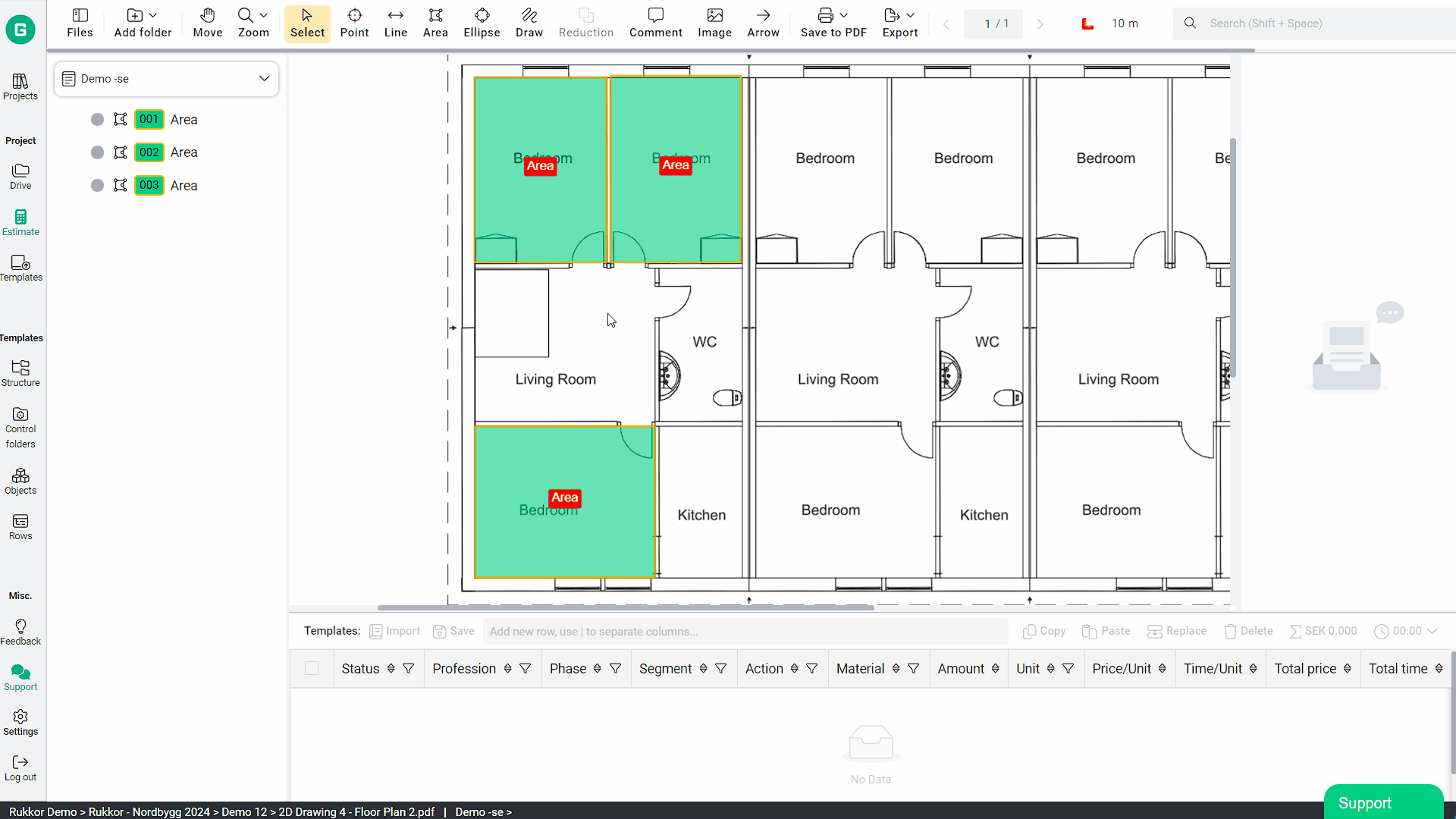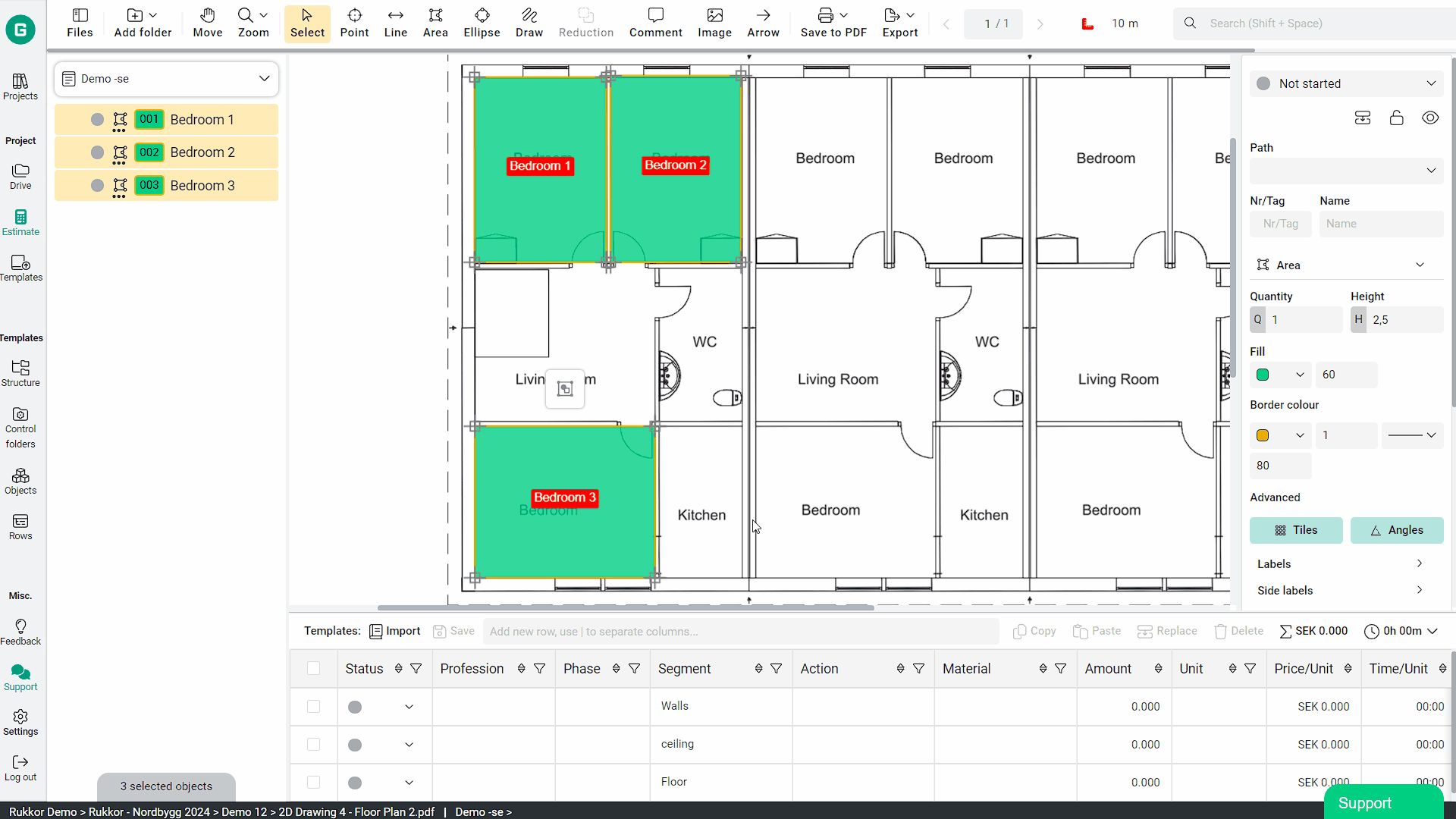Quantity takeoff and Markup
Here, you will learn how to work with quantity takeoffs in Geometra. How to use markup tools, and what possibilities you have to describe your bill of quantities.
What is quantity takeoff?
<div class="version-tag">v5.0</div>
Quantity takeoff is about determining and calculating the quantities of various materials involved in a construction project. When you create quantity takeoffs, you make an exact calculation of the amount of material needed. This can include concrete, bricks, wood, plaster, insulation, etc.
To do this, you need to measure and determine values such as:
Area: You need to know the size of the areas to be covered with materials, such as floor, wall, or roof areas.
Volume: Sometimes, you need to calculate the volume of material to be used, such as concrete, for pouring a foundation or a wall.
Length: By calculating the total length of something on the drawing, you can determine how many material units are needed to cover a certain distance or area. This can include items such as wooden boards, pipes, cables, or wires.
Dimensions: Consider the dimensions of the materials to be used, such as the length, width, and height of facade panels.
In Geometra, you work with quantity calculation using the various tools available. The values you obtain, for example, by measuring an area, are collected in the properties section on the right side of the calculation view.
Markup
<div class="version-tag">v5.0</div>
Select the markup tools to make annotations and notes directly on the drawing or document. Place objects, add colour, draw arrows, highlight areas with colour, and set correct scales and heights. Obtain measurement values to work within your rows. Tools create objects on the drawing, meaning measured or placed results from a tool.

Sort into folders
<div class="version-tag">v5.0</div>
When you create an object on your drawing, it appears in the estimate tree. Here, you can organize your objects into folders. You can easily add a folder to the estimate tree by right-clicking and selecting "add folder". You name the folders according to their contents. For example, some objects may only relate to facades, so you can name the folder "facades".
We recommend that you sort the information based on location, for example, building block or apartment. This makes it easy to retrieve subtotals for different parts quickly.
Read more under the topic Templates.

Assign Description and create Quantity takeoff
<div class="version-tag">v5.0</div>
A placed object without a description represents nothing. It is only when you describe the objects that they become quantity items.
There are two ways to describe quantities. You can do it at the row level or object level. Please take some extra time to use the rows, as they allow you to reuse the information from one object to represent several different quantity items.

Assigning using Rows
<div class="version-tag">v5.0</div>
There are so-called measurement values on all objects. These are displayed under properties to the right in the calculation view and categorized into several categories based on the object type.
Based on these, you then create a row on the object and describe in the different columns what the quantity should refer to. In the "Quantity" field, you then fill in the corresponding variable from the measurement value list to link the measurement values to the quantity item.
Read more under the topic Rows.

Assigning information directly at the Object Level
<div class="version-tag">v5.0</div>
Describing at the object level works excellently for very simple setups of quantity takeoffs. This method works well when you are only working with a few different types of quantities, where none of the marked objects share information about other quantities.
Here's how you do it: Describe the quantity takeoff in the Name field for the object. You can also advantageously use product codes or equivalents in the "Number/Tag" field.
.png)
Compile and Subtotal
<div class="version-tag">v5.0</div>
If you have created a good structure among your folders in the estimate tree, each folder automatically becomes a subtotal. You can quickly sum up entire building blocks, floors, or apartments by selecting the folder it represents. Everything under that folder, including subfolders, will then be totalled downwards, giving you a result that applies from that level in the tree and downwards.
You can also select multiple different folders at the same level to combine their totals.
Geometra always sums up what is selected. This applies even if you choose different objects directly, then what you see will be a sum of your selections.
.png)
.svg)
.svg)